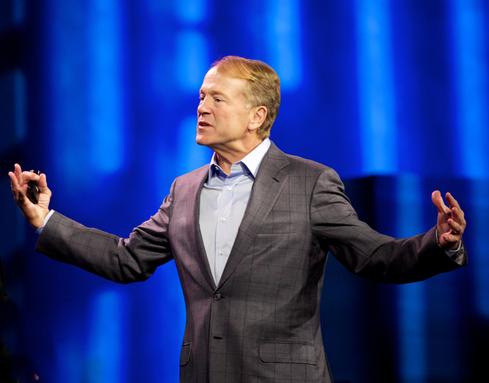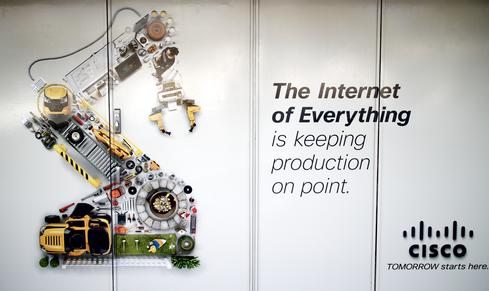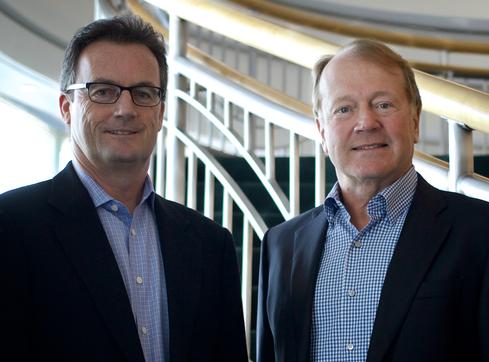Cisco execs say their grand vision of the Internet of Everything is taking shape in new products and services. But some analysts and customers still find the picture fuzzy.


8 Gadgets For The High-Tech Home
8 Gadgets For The High-Tech Home (Click image for larger view and slideshow.)
Cisco CEO John Chambers declared his company "all in" on the Internet of Everything (IoE) more than a year ago, and he hasn't backed down. From his appearance at CES, where Chambers said IoE will generate $19 trillion by 2020, to the IoE-themed posters plastered around San Francisco for this week's Cisco Live, the concept pervades Cisco's messaging.
To Cisco, IoE is the Internet of Things (IoT) correctly implemented. Whether it's smartphones running Uber, connected basketballs that make you a better shooter, or railroad sensors that minimize derailments, many people and businesses are already transitioning from dumb objects to smart, connected devices. Cisco describes IoE as the network architecture that ties it all together.
IoE delivers "the right information to the right person or machine at the right time," Chambers told InformationWeek last week in an interview.
[Does Cisco CEO Chambers know the way to the promised land? Read Cisco's 3 Commandments.]
But IoE isn't a product; it's an architectural concept that includes many products. What that means for individual businesses, especially those outside obvious IoT opportunities such as manufacturing, can be fuzzy.
Figure 3:  John Chambers speaks at this year's CES
John Chambers speaks at this year's CES
"Others in the industry are still scratching their heads about what [IoT] means, puzzling that any vendor, including Cisco, has all the pieces," said Forrester analyst Frank Gillett last week in an interview. He said IoT technologies offer long-term upside and that Cisco possesses useful pieces of the puzzle. But he dismissed economic projections as marketing tactics, and said the IoE banner is about mindshare as much as actual products.
Given its reputation as a predictor of market transitions, Cisco counts mindshare among its specialties. To that end, the company has already assembled a growing list of high-profile IoE success stories, including the City of Barcelona, which uses connected infrastructure to reduce costs and enable new services.
But critics charge Cisco itself has missed transitions. Some customers and shareholders are less interested in IoE, for example, than in IT's shift from the expensive networking gear on which Cisco made its fortune to software-defined networks (SDN) built on commodity hardware.
Cisco posted better-than-expected profits last week, including strong growth in its Application-Centric Infrastructure (ACI) business, which relates to both SDN and IoE. As Chambers described it, SDN is an IoE enabler. If you think of SDN as a tree, then IoE is the forest, and Chambers, citing Cisco's prowess as a systems integrator, believes his company has an advantage because it sees both.
According to Cisco, IoE demands a distributed network architecture in which most decision-making occurs at the edge. As more machines communicate and more sensors slurp up data, sending everything to a data center becomes impractical. Edge programmability, or fog computing as Cisco calls it, can filter data, thereby avoiding bandwidth constraints. It also enables other essential IoE components, including network-wide security, real-time analytics, and more agile handling of applications.
Cisco's march toward distributed networks can be seen in many products, including its main SDN plays -- the Nexus 9000 switch and ACI. The products are partly an answer to SDN rival VMware, whose wares were the subject of unfavorable comparisons during Cisco Live product demonstrations. But again, they're also about enabling IoE.
With ACI and the Nexus 9000, Cisco combines both software and hardware, going against industry trends toward only the former. In a November interview with InformationWeek, Chambers argued businesses will spend more money over time if they attempt to do everything in software while relying on white label hardware.
[The] majority of the cost is combining vendors that weren't designed to work together. And the only thing worse than vendors that weren't designed to work together are white boxes that weren't designed to work together," he said.
Figure 2:  One of several IoE-themed advertisements displayed in San Francisco during Cisco Live
One of several IoE-themed advertisements displayed in San Francisco during Cisco Live
In the more recent interview, Chambers reiterated this position. He maintained
that integrated products entail lower operating costs than white box concoctions and provide better future-proofing as IoE scenarios create more complex demands. Connected retail stores will produce ten times the data that virtual stores do, he added. Such stores might employ heat maps, video and gesture recognition, and other tools to discern buying patterns, make better decisions, and offer targeted deals to customers.
"[But] 95% of that data will never leave the store, nor should it," he asserted, adding that an architecture with fog decision-making can handle this complexity. "If you combine the physical store and the virtual store, it becomes even more important how you do the connections."
Still, Chambers said, customers don't want vendor lock-in, and he pointed to the flexibility IT can employ thanks to Cisco's growing list of open APIs. "Our goal is to be the primary player, and if you're proprietary, they're not going to let you do that." Speaking specifically of SDN, he said, "You've got to be able to have an open system, and the ability to add value … We're going to implement it better than anybody else, and I think we're going to lead it. We'll be able to scale it."
While SDN plays a role in IoE enablement, Intercloud will truly bring the concept to life, said Cisco President Rob Lloyd.
Figure 1:  Cisco president Rob Lloyd, left, and CEO John Chambers, right
Cisco president Rob Lloyd, left, and CEO John Chambers, right
Announced earlier this year, Intercloud is a federation of partner datacenters, built on OpenStack and infused with Cisco's ACI programmability. The concept could make apps and services easier to scale, and more intriguingly, provide a global pipeline for IoE data. Working with APIs, IT can direct data from devices into the Intercloud, which will identity the data source, assign it to the proper repository, and apply real-time analytics.
Lloyd said self-driving and semi-autonomous cars demonstrate why different clouds will need to communicate in an IoE world. By making vehicles on the road aware of one another, manufacturers can minimize accidents -- but they'll also need to allow their products to interface with those of competitors.
"The basic premise is, the cloud will need to be a connection of all clouds," said Lloyd. "The service, delivery of applications, and programmable events that will need to be interpreted will involve everybody's cloud."
That's where Intercloud comes in. "The APIs we set up in each area will allow for moving workloads between them," Lloyd said, explaining that because Intercloud is hypervisor-agnostic, an application written on vSphere could be easily moved to, say, Amazon.
Lloyd likened Intercloud to a "Star Alliance of the cloud business," with partners' individual assets pooled for communal benefit. Service providers extend their reach, Cisco expands delivery of SaaS products such as WebEx and Meraki, data automatically moves where it needs to, and everyone wins -- at least in theory.
Even as Cisco's portfolio makes IoE more viable, the company, and IoT proponents in general, face rampant security concerns. To many customers, the threat comes not just from hackers, but also from corporations and governments.
Cisco handles these fears several ways, such as with products that automate the network's detection and mitigation of threats. "For IoE to take off, we've got to have security end-to-end, more than firewalls and antimalware," said Chambers, referencing self-learning networks and security installed at the network edge.
Cisco VP Christopher Young said the network must provide visibility into applications and know how they are supposed to behave. He also pointed to Intercloud, stating, "Everybody plays a [security] role, [whether it's] Microsoft, AT&T, it's just at different layers."
And what about privacy? Some fear fitness bands will allow health insurers to jack rates when users don't exercise and that connected cars will notify police whenever you speed. Cisco execs counter that IoE services must be opt-in and that the user must be in control, noting that most people will abandon a service if they feel betrayed.
Concern over government surveillance, stoked by recent claims that NSA agents intercept and modify Cisco hardware, are more challenging. Cisco reps noted this week that the NSA claim remains unproved. Chambers denied sharing code with governments or facilitating NSA modifications along the supply chain. He's called on President Obama to adopt new security policies.
What do Uber, Bank of America, and Walgreens have to do with your mobile app strategy? Find out in the new Maximizing Mobility issue of InformationWeek Tech Digest.
About the Author(s)
You May Also Like







